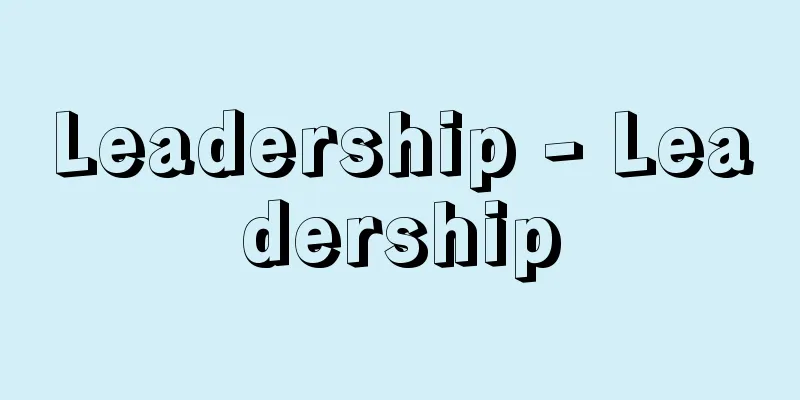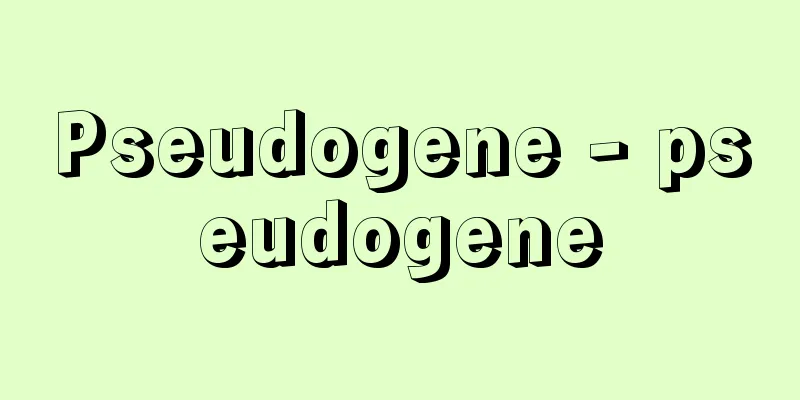Leadership - Leadership

|
It is the action or process of acquiring a position that mobilizes the collective efforts of people who are formally organized or informally assembled toward a shared goal or purpose, and actively performing that role. Since it is a process in which an individual consistently exercises influence over others in the performance of group functions, it has aspects of informal influence and emotional control, as well as the exercise of formal authority. Leadership can be seen as an interaction between a leader and followers. The actions of a leader condition the reactions of followers, and vice versa. The debate between the "great man theory," which holds that history is the same as the biographies of great people, and the "cultural determinism" which holds that leaders are the product of historical forces and their role is limited by ongoing social processes, can be said to emphasize only one aspect of the complex leadership process. The former emphasizes the characteristics of the leader, while the latter emphasizes the situation. Therefore, the former tends to overlook the fact that the leader's personal characteristics and values must match the needs and desires of the followers. Conversely, the latter emphasizes the situation too much and tends to ignore the fact that the leader's personality sometimes has a decisive meaning. Leadership needs to be considered in a framework that relates the actions and mentalities of the leader and followers to situational forces. The functions of leadership are (1) clarifying goals and maintaining goal pursuit, (2) supplying and replenishing the means and resources to achieve goals, (3) building and maintaining group structure, (4) promoting group action and interaction, (5) maintaining internal cohesion and members' sense of satisfaction, and (6) adjusting desires and promoting organizational activity. In other words, it controls "intra-organizational politics" with the logic of integration, and develops "inter-organizational politics" dominated by the logic of conflict as a representative and symbol of the organization. In order to prevent the organization from disintegrating, the leader needs to establish and maintain two system equilibria: internal equilibrium (balance between the various elements within the organization) and external equilibrium (balance between the organization and external circumstances). Basically, it is necessary to balance "organizational effectiveness" and "organizational efficiency" and simultaneously satisfy both (for example, simultaneous efforts to achieve organizational and subsystem objectives, maintaining ideological purity and harmonizing organizational expansion, determining the priorities of goals and tactics, optimal allocation of power, authority, and posts, and optimal absorption of informal organizations). However, even if an organization is a system for performing functions that are objectively rational as a means of achieving goals, if the members who are the actual bearers of the functions lack the motivation to "contribute to the organizational goals," effective functioning cannot be expected. The organization forces its members to make sacrifices to achieve its goals and provides "incentives" in return. Meanwhile, the members provide "contributions" in exchange for "incentives." If the organization fails to provide appropriate incentives, the collaborative relationship between the leader and followers will collapse, the goals will be required to be changed, and the organization will begin to decline and disintegrate. However, organizational resources (resources that can be invested in maintaining internal and external balance and in efforts to achieve goals) are limited, and it is not possible to completely satisfy the demands of members whose desire levels are constantly rising. Leaders need to allocate limited resources to achieving effectiveness and efficiency, keeping in mind the distance between the rational optimum and the members' satisfaction points, and seek the optimal critical point of the two equilibria. Leadership can be broadly classified into democratic leadership and authoritarian leadership. The former is a leadership pattern that encourages followers to decide their own policies, explains the means and techniques for achieving goals in advance to give members a perspective, gives followers the freedom to start their own work and interactions, and rewards and punishes followers in an objective manner. Democratic leaders try to expand followers' freedom of action as much as possible and tend to stimulate followers' self-direction. On the other hand, the latter is a leadership pattern that decides all policies for and on behalf of followers, dictates the means and methods for achieving goals one at a time, actively directs followers' actions and interactions, and evaluates followers' capabilities in a personal and subjective way. Authoritarian leaders have a strong tendency to restrict followers' personal authority and freedom of action (theories of K. Levin and R. Lippit). Regardless of the type of leader, the amount of work accomplished is not significantly different, but the former is more creative and the followers are more satisfied. This is because friendship, spontaneity, cohesion, and unity are characteristics that are manifested under democratic leadership. However, in large, task-oriented organizations that prioritize productivity improvement, members tend to be satisfied with authoritarian leadership. On the other hand, in small, interaction-oriented organizations, there is a strong tendency to desire democratic leadership. [Nobuf Okazawa] Source: Shogakukan Encyclopedia Nipponica About Encyclopedia Nipponica Information | Legend |
|
分有された目標・目的に向けて、フォーマルに組織化されたり、インフォーマルに結集した人々の集合的努力を動員する地位を獲得し、その役割を積極的に遂行する行動・過程をいう。集団機能の遂行にあたってある個人が他の人々以上に影響力を一貫して行使する過程であるので、インフォーマルな影響力行使、感情的支配という側面とフォーマルな権威の行使という側面をもっている。 リーダーシップはリーダーとフォロワーとの相互作用ととらえることができる。リーダーの行動がフォロワーの反応を条件づけ、逆に、フォロワーの行動がリーダーの反応を条件づける。歴史は偉大な人物の伝記と同じであると考える「偉人列伝型理論」と、リーダーは歴史の諸力の所産であり進行中の社会過程によってその役割が制限されると考える「文化決定論(状況決定論)」の論争は、それぞれが複雑なリーダーシップ過程の一局面のみを強調したものといえよう。前者はリーダーの特性をもっぱら強調し、後者は状況を強調する。それゆえ、前者はリーダーの個人的特性・価値がフォロワーの必要と願望に適合しなければならないことを見逃す傾向がある。逆に後者は状況を強調するあまり、リーダーのパーソナリティーがときとして決定的意味をもつことを無視しがちである。リーダーシップはリーダーとフォロワーの行動・心性を状況諸力に関連づける構図で考える必要がある。 リーダーシップの機能は、(1)目標の明確化と目標追求の維持、(2)目標達成手段・資源の供給・補給、(3)集団構造の構築と維持、(4)集団行動、相互作用の促進、(5)内部結束とメンバーの充足感維持、(6)欲望の調整、組織活動の促進、である。つまり、統合の論理で「組織内政治」を制御し、抗争の論理が支配する「組織間政治」を組織の代表・シンボルとして展開する。組織解体を阻止するために、リーダーは二つのシステム均衡、つまり対内的均衡(組織内諸要素間の均衡)と対外的均衡(組織と外的状況との均衡)を確立・維持する必要がある。基本的には、「組織の有効性」と「組織の能率」のバランスをとりながら、両者を同時に充足する必要がある(たとえば、組織目的とサブシステム目的との同時的達成努力、思想的純潔の維持と組織拡大の調和、目標および戦術の優先順位確定、権力・権限・ポストの最適配分、インフォーマル組織の最適吸収)。だが、目標達成手段としての組織が目的合理的な機能遂行システムであったとしても、機能遂行の実質的担い手であるメンバーに「組織目標に貢献しようとする」意欲が欠如していると、有効な機能遂行は望めない。組織は目標達成のためにメンバーに犠牲を強要し、見返りとして「誘因」を提供する。一方、メンバーは「誘因」と交換に「貢献」を提供する。組織が適切な誘因提供に失敗すれば、リーダーとフォロワーの協働関係が破産し、目標の変更を要求され、組織は衰退・解体への道を歩む。だが組織資源(対内的均衡・対外的均衡を維持し、目標達成努力に投入できる資源)は有限であり、欲望水準を不断に上昇させるメンバーの要求を完全に充足することはできない。リーダーは、合理的最適点とメンバーの充足点との距離を念頭に置いて、有効性の達成と能率の達成とに限りある資源を配分し、二つの均衡の最適臨界点を模索する必要がある。 リーダーシップは大きく民主的リーダーシップと権威主義的リーダーシップに分類できる。前者は、フォロワーが自分の政策を決定するよう激励し、目標達成手段・技法を事前に説明してメンバーに展望を与え、フォロワーが自己の業務と相互作用を開始する自由を与え、客観的な方法でフォロワーに賞罰を与えるリーダーシップのパターンである。民主的リーダーはフォロワーの行動の自由をできる限り拡大しようとする。そして、フォロワーの自己指導を刺激する傾向がある。一方、後者は、フォロワーのためにそれにかわってすべての政策を決定し、一度に一つずつ目標達成の手段と方策を指令し、フォロワーの行動と相互作用を積極的に指示し、個人的・主観的な方法でフォロワーの力量を評価しようとするリーダーシップのパターンである。権威主義的リーダーはフォロワーの個人的権限と行動の自由を制限しようとする傾向が強い(K・レビン、R・リピットの説)。 どのタイプのリーダーをいただこうと、遂行される仕事量には大差はないが、独創性は前者の場合のほうが発揮されるしフォロワーの満足感も前者の場合のほうが大きい。なぜなら、友愛、自発性、凝集性、団結は民主的リーダーの下で顕在化する特徴であるからである。しかし、生産性の向上を優先させる巨大で業務指向型組織ではメンバーは権威主義的リーダーシップに満足する傾向がある。一方、小規模で相互作用指向型組織では民主的リーダーシップを希求する傾向が強い。 [岡沢憲芙] 出典 小学館 日本大百科全書(ニッポニカ)日本大百科全書(ニッポニカ)について 情報 | 凡例 |
<<: Altruism - English spelling
Recommend
Paul Cézanne
A French painter, he is considered one of the gre...
Jelutong
…The main producing countries are Guatemala and M...
Yanagawa Domain
A Tozama Naka-han (outside clan) whose castle was...
Humber Bridge - Humber Bridge
A suspension bridge over the River Humber near Hul...
Kerama Islands - Keramaretto
Okinawa Prefecture, Okinawa Islands are distribut...
Virginia Statute for Religious Freedom
The first law in America to establish separation o...
Tomasi di Lampedusa, G. (English spelling) TomasidiLampedusaG
...Berga's poetic prose, based on the everyda...
Nakazato [village] - Nakazato
A village in Nakauonuma County in southern Niigata...
Lost - Lost
〘 noun 〙 (a variation of "mayoigo (lost child...
Diphros okladias (English spelling)
…Egyptian chairs were adopted into the life of an...
orthosilicate
...The figure shows the names of these six types ...
Sigmund Reichsfreiherr von Herberstein
1486‐1566 Austrian diplomat. He visited Moscow twi...
Stemona tuberosa (English name) Stemonatuberosa
…[Tetsuichi Yahara]. … *Some of the terminology t...
Fairy tales - conte de fées (France)
In the narrow sense, it refers to supernatural sto...
Kinshinryu
A school of Satsuma Biwa. It was founded by Nagata...









